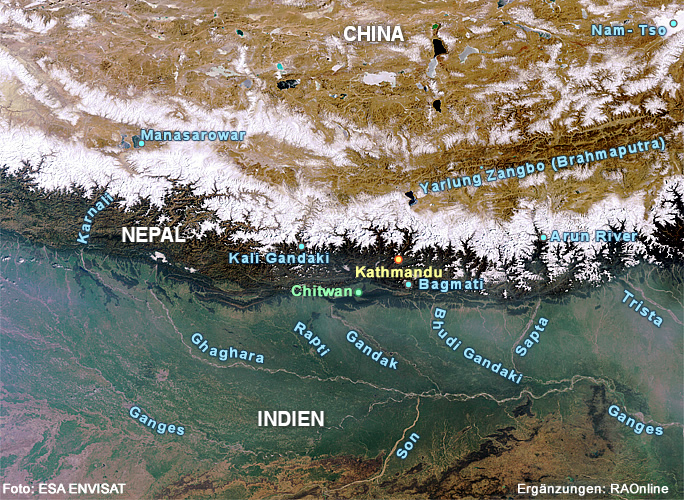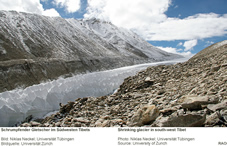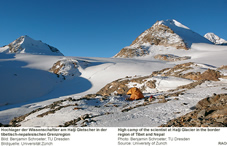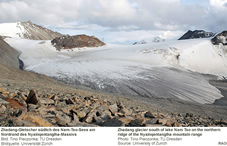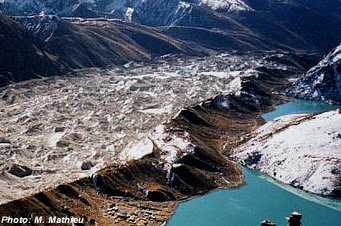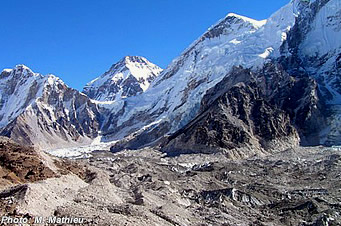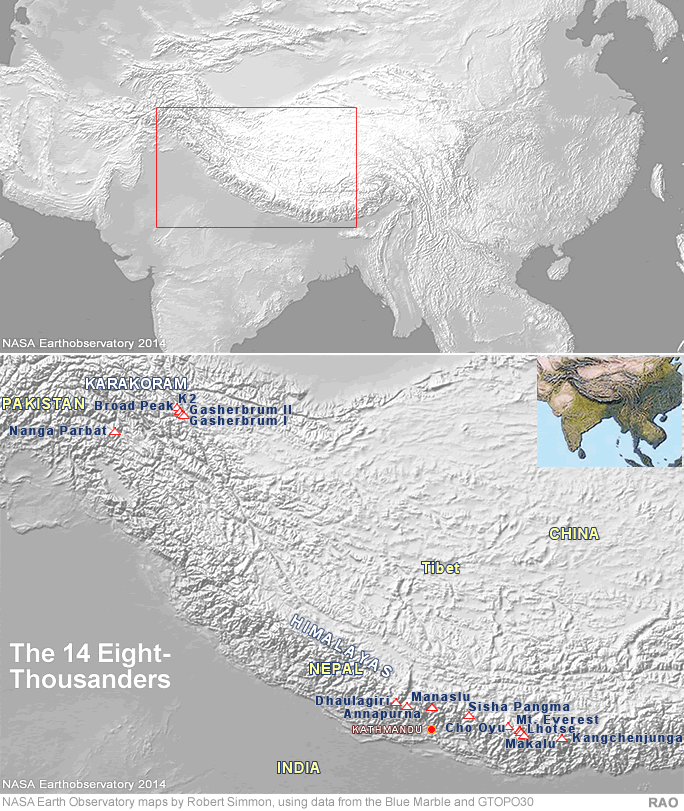| Nepal's
Glaciers - Climate Change |
 |
Nepal Himalayas Glaciers |
 |
Nepal Information |
|
|
 |
| Glaciers in Nepal and Tibet (China) |
|
Meltwater from Tibetan glaciers floods pastures |
 |
The earth is warming up, the glaciers are shrinking. However, not all meltwater is causing sea-level rise as feared. In Tibet, as measurements taken by an international team of researchers including the University of Zurich reveal, a significant proportion of the meltwater remains on land. The consequences are, however, equally negative: it can cause lakes without an outlet to overflow and flood valuable pastureland.
Glaciers are important indicators of climate change. Global warming causes mountain glaciers to melt, which, apart from the shrinking of the Greenlandic and Antarctic ice sheets, is regarded as one of the main causes of the present global sea-level rise. Tibet's glaciers are also losing mass clearly, as scientists from the universities of Zurich, Tubingen and Dresden reveal using satellite-based laser measurements. Over the last decade, the research team has detected a "clear loss in mass of around 16 gigatons a year in around 80 percent of the Tibetan glaciers," says Tobias Bolch, a glaciologist from the University of Zurich involved in the study - that's more than four times the volume of water in Lake Zurich and around six percent of the total loss in mass of all the glaciers on Earth.
 |
| The Halji glacier is situated in the northwest of Simikot, the headquarters of Humla district (Nepal) |
Some glaciers in Tibet are growing
However, the measurements also bore some positive news: Some glaciers in the central and north-western part of the Tibetan Plateau have actually grown in mass. While the glaciers in the monsoon-influenced southern and eastern part of the plateau have melted significantly, the scientists recorded a neutral or even slightly positive result in the continental central and north-western area of the country. Nonetheless, as Bolch notes, "On average, the entire region is clearly characterized by a loss in mass."
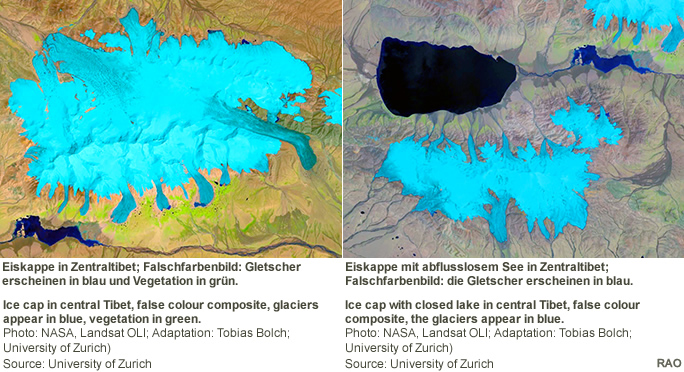 |
At a first glance, the evidence that not all of the meltwater flows into the ocean via the large Asian currents and causes the sea level to rise seems positive. "However, flooding is still a problem," says Bolch. After all, a large proportion of the melt - around two gigatons a year, as scientists have quantified for the first time - flows into lakes without an outlet on the plateau, causing them to burst their banks. "In many regions, this means that valuable pasture areas become submerged," explains the glaciologist.
Precise results thanks to a combined measuring technique
Stretching over an area of around 40,000 square kilometers, the Tibetan Plateau's glaciers account for over a third of High Asia's ice cover and are about twenty times the size of the ice surface of the Alps. For their study, the international team of researchers evaluated satellite-based laser measurements of the glacier surfaces on the Tibetan Plateau between 2003 and 2009. "Thanks to these measurements, we were able to gauge the temporal changes of the glacier heights and - combined with a detailed glacier inventory - changes in mass of the glaciers in Tibet, which are extremely difficult to access," say Tubingen scientists Niklas Neckel and Jan Kropacek, explaining the measuring technique.
The results now published in Environmental Research Letters seem to contradict the data from a satellite mission based on other measuring methods, which indicates a slight increase in mass in the glacier ice for an almost identical period of time. For Bolch, the different measurement values depend on the amounts of meltwater that remain on the plateau and do not flow away into the sea - and which his team has now managed to measure accurately for the first time. He attributes the data from the other studies that points to glacial growth more to other influences on the calculations - such as an increase in rainfall.
Literature:
Niklas Neckel, Jan Kropacek, Tobias Bolch and Volker Hochschild. Glacier mass changes on the Tibetan Plateau 2003 - 2009 derived from ICESat laser altimetry measurements. Environmental Research Letters. January 16, 2014
| Gaciers in Tibet (China) |
 |
| enlarged pictures: Please click on the small pictures |
| Glaciers in Nepal |
 |
top
| Links |
 |
 |
 |
External
link |
| more information |
 |
| Snow, Ice, Glaciers, Glacial Lakes and Floods - Reports |
 |
| Himalayas |
 |
Snow, Ice, Glacier, Glacial Lakes and Floods Reports |
 |
|




